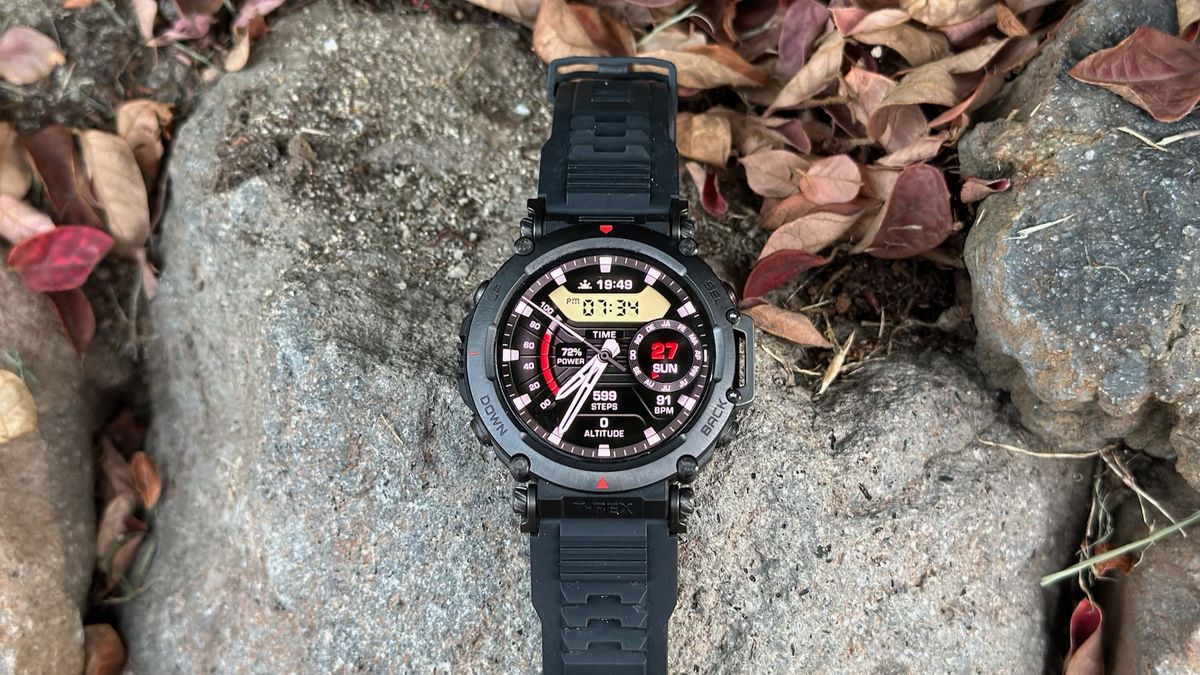
I like how Amazfit has taken an aggressive approach to its newest watches. Cheaper models like the GTS 4 Mini will remain its bread-and-butter for the near future, but new lineups like the Falcon, T-Rex, and Cheetah prove that it’s willing to take on higher-end fitness brands with new form factors.
The Amazfit T-Rex Ultra is for people who love massive stainless steel behemoths like a Garmin Epix Pro or (to a lesser extent) the Galaxy Watch 6 Classic 47mm. Having just reviewed the Classic and found it at the upper end of my comfort zone, the T-Rex Ultra crashes through that upper limit like, well, the gate-smashing T-Rex in Jurassic Park.
Even though I know the T-Rex Ultra doesn’t cater to my needs — the Cheetah Pro is much more my speed — I’ll do my best to give it a fair shake and highlight the aspects that other types of athletes will appreciate.
Still, it’s hard to brush aside the feeling that the Amazfit T-Rex 2 remains a better all-around purchase a year later for fans of rugged fitness smartwatches.
Amazfit T-Rex Ultra Price and Availability
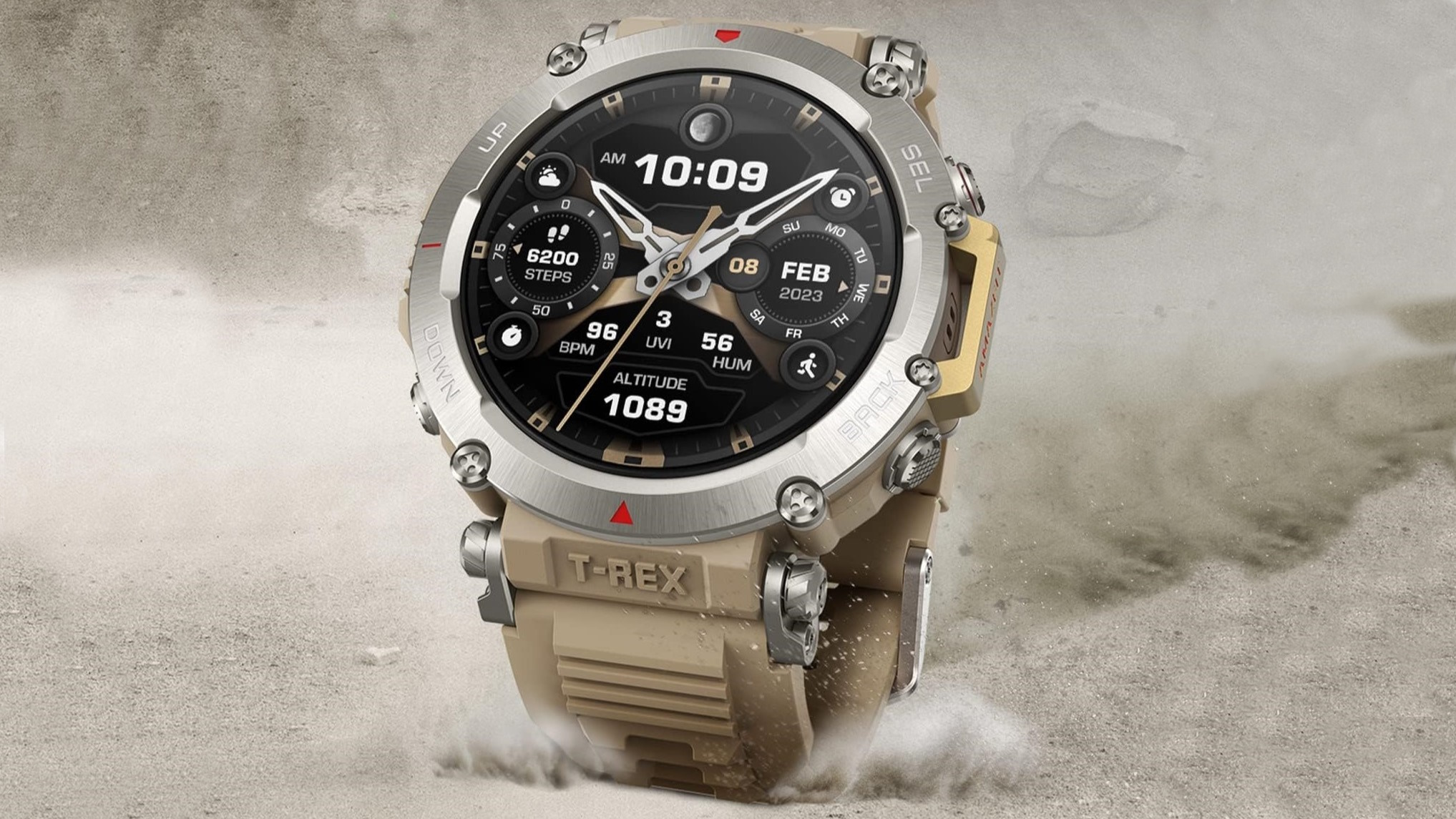
The Amazfit T-Rex Ultra costs $399 / £399 / €469 and is available in China, the Czech Republic, France, Germany, Italy, Spain, the United Kingdom, and the United States. Of Amazfit’s usual territories, only India appears to have not received the Ultra (and other high-end models) yet.
The T-Rex Ultra ships in two colors: Abyss Black and Sahara. It’s primarily available through Amazon, Best Buy, and Amazfit’s storefront in the U.S.
Amazfit T-Rex Ultra: What you’ll like
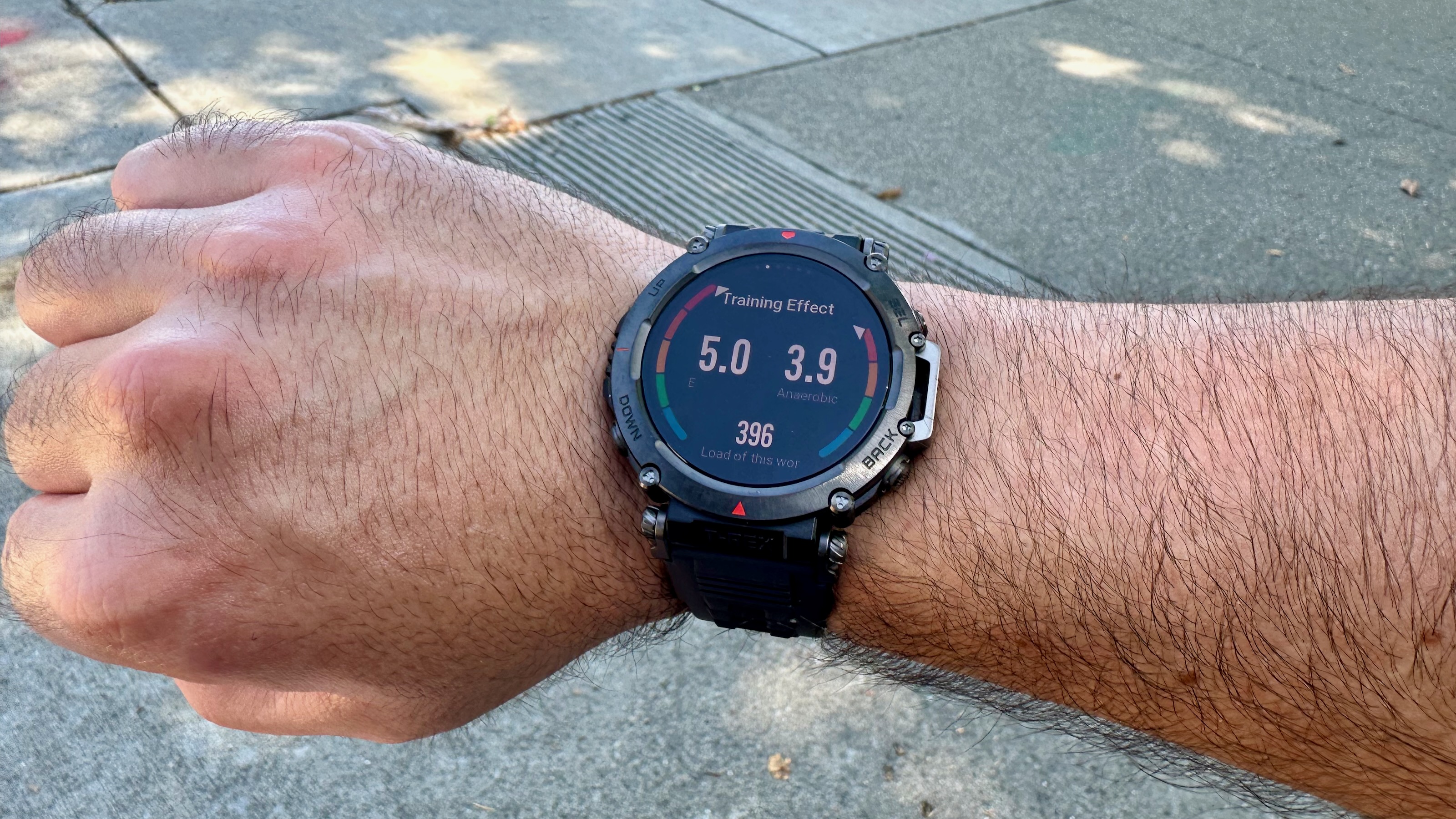
The T-Rex Ultra goes all-in on its rugged aesthetic, and my issues with comfort aside, I think it looks pretty badass. It’s all hard lines and lugs and loops, with an elevated stainless steel bezel protecting a bright, rich 1.39-inch touch display.
Compared to your typical rugged smartwatch, the T-Rex Ultra uses 316L “marine grade” stainless steel across the bezel, bridge, back panel, and buttons, with hardened polymer alloy for the middle frame. This material helps the Ultra meet EN13319 & ISO 6245 diving certifications to work 30 meters below the surface.
It passes 15 MIL-STD-810G tests, including those for heat, cold, humidity, salt spray, ice, shock, and mud. It’s also rated to survive in 70ºC (158ºF) heat or -40ºC (-40ºF) cold. It’s all fantastic to have but totally overkill for casual suburban nature lovers like myself. I mainly appreciate the fact that it will survive conditions or damage that would kill me, so I never really have to worry about it.
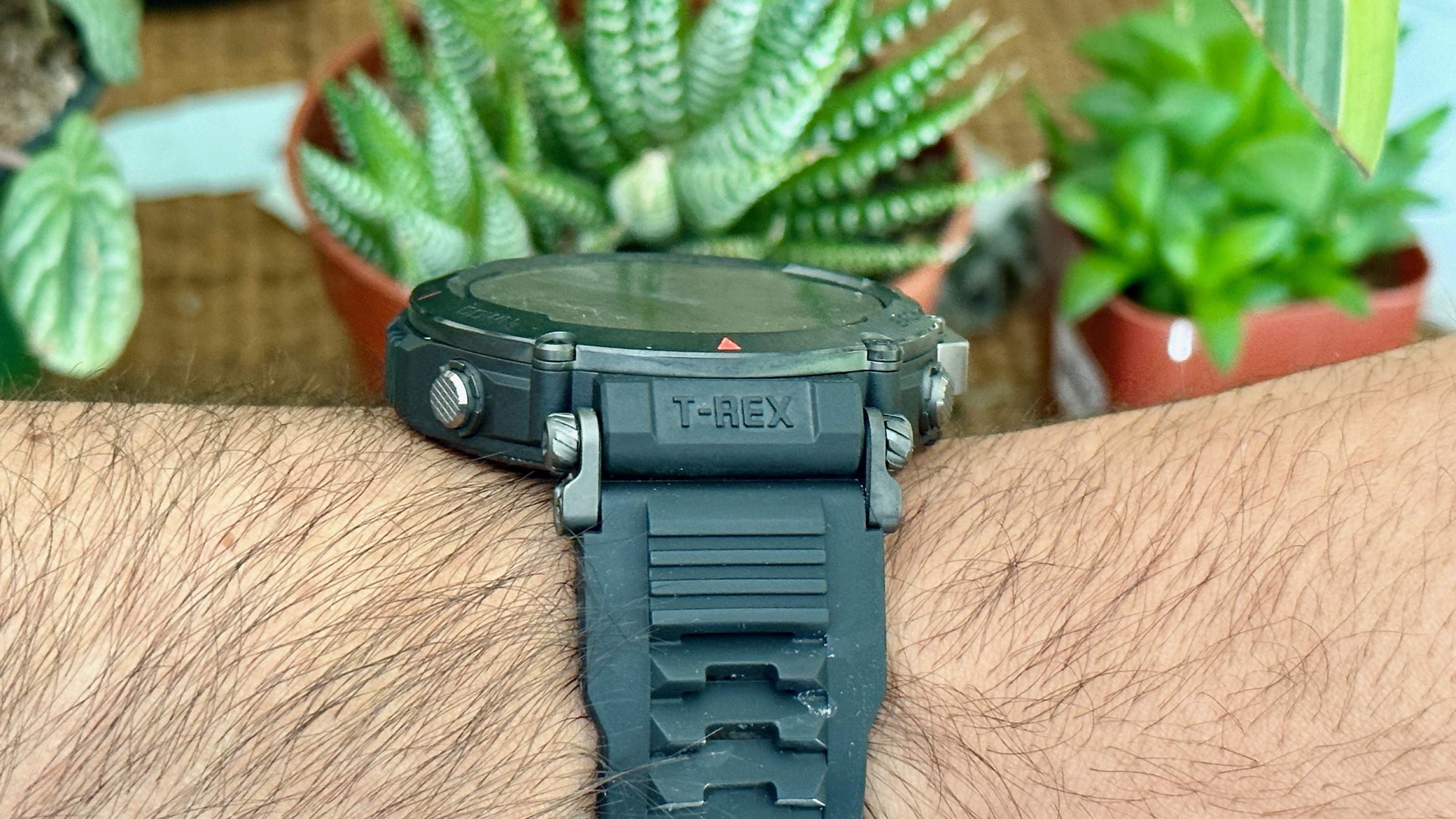
If it weren’t for the weight — yes, that’s a major if — I’d consider the T-Rex Ultra design surprisingly comfortable. The adjustable lugs between the case and strap leave plenty of leeway to loop around your wrist instead of digging into it while still allowing for a secure fit.
I also appreciate having four textured metal buttons — Select, Back, Up, and Down — since I’m not the biggest fan of how Amazfit designs its crowns. Compared to other fitness watch brands that tend to have squishy polymer buttons (looking at you, Garmin), these give a satisfying, consistent click when pressed. They’re easy to use on the trail, while the large touchscreen works best at home.
| Header Cell – Column 0 | Amazfit T-Rex Ultra |
|---|---|
| Dimensions | 47.3 x 47.3 x 13.45 mm |
| Weight | 89 grams |
| Materials | Stainless steel bezel, back panel, bridge, buttons; Polymer alloy middle frame |
| Display | Touchscreen AMOLED, 1.39 inches, 454 x 454 (326 PPI), 1,000 nits |
| Colors | Abyss Black, Sahara |
| Operating System | Zepp OS |
| Buttons | 4 |
| Strap | 22 mm, silicone |
| Battery | 500mAh, 20 days (smartwatch mode), 46 hours (GPS only), 28 hours (Dual-band GPS) |
| Connectivity | Bluetooth 5.0 BLE, WLAN 2.4GHz |
| Sensors | BioTracker 3.0 PPG biometric sensor, acceleration, gyroscope, geomagnetic, barometric, ambient light |
| Health tracking | SpO2, heart rate, stress |
| Trackable sport modes | 162 (33 smart recognition modes) |
| Water Resistance | 10 ATM (100 meters, surface swimming, and snorkeling) |
| Durability | 15 MIL-STD-810G certifications |
| Location | Dual-band 6 satellite positioning |
Like the Cheetah Pro and Cheetah Round, the T-Rex Ultra has dual-band, all-systems positioning with six GNS systems, matching the highest GPS standard — though it doesn’t explicitly have Amazfit’s new “MaxTrack” setting with a “circularly-polarized GPS antenna” like the Cheetah series.
In practice, I’ve found that it’s pretty darn accurate, with only occasional drifting. Purely in terms of distance, you should get accurate enough results with enough battery life to use it across an all-day hike (so long as you charge it at the end).
Outside of GPS activities, the T-Rex Ultra won’t quit (unlike Jurassic Park’s electrical system). It likely won’t last the full 20-day estimate, but I’ve found the 9-day “heavy usage” estimate is accurate. That includes continuous heart rate and stress data, occasional blood oxygen tests, regular notifications, higher brightness settings, and at least a couple hours of GPS tracking a week.
The more you use “Accuracy Mode” GPS, the more that cuts into the powerful 500mAh battery. But otherwise, Zepp OS is designed for efficiency and doesn’t really have much in the way of activities like an Apple or Wear OS watch. You should have no trouble avoiding frequent recharging.
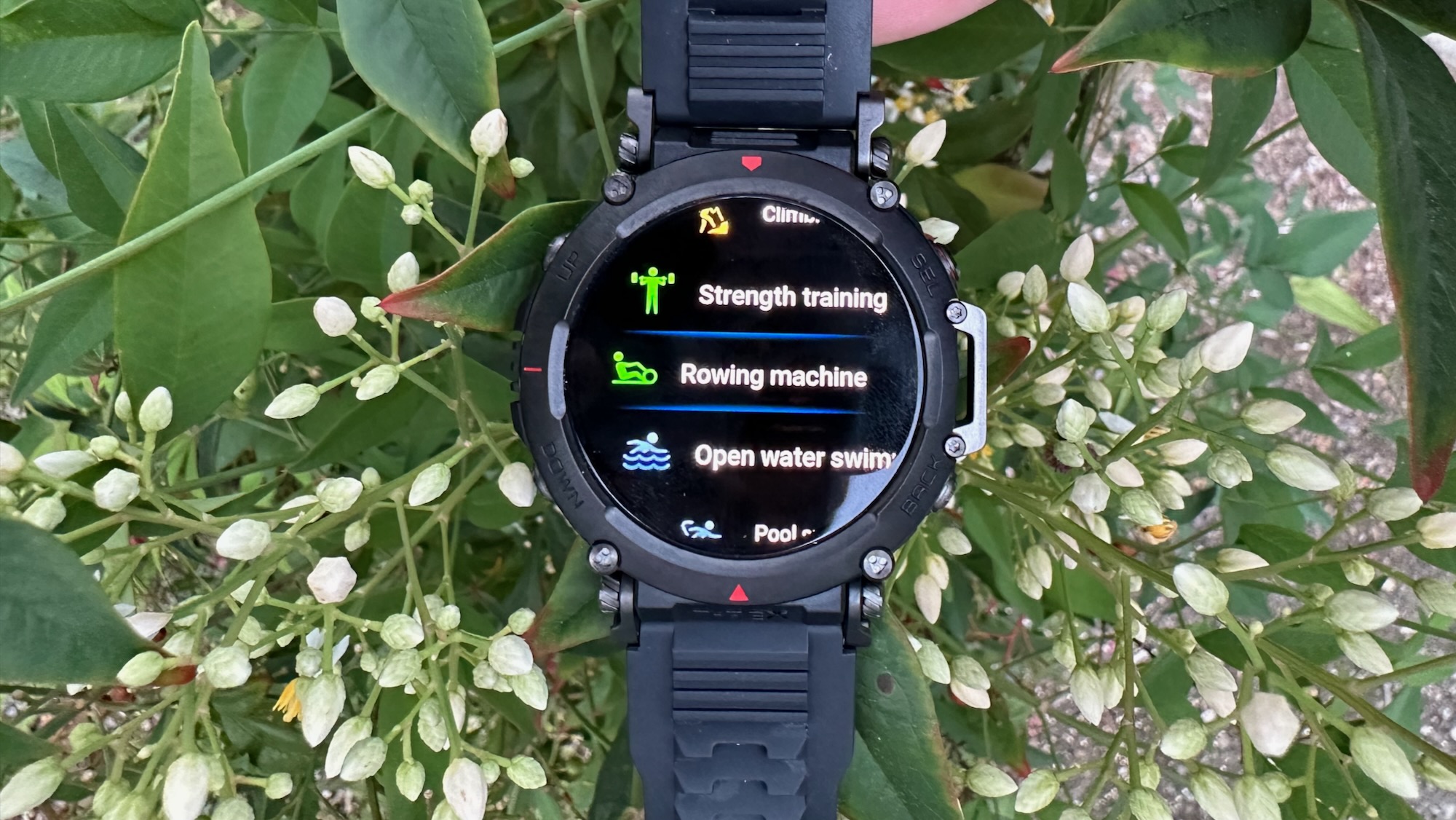
Most Amazfit watches have an absurd number of sports modes; however, the T-Rex Ultra takes the cake with 162 total. It’s just four more than the T-Rex 2 — adding niche modes like skydiving, spearfishing, and freediving — but still dozens more than your typical Amazfit, spread across categories like Running, Cycling, Swimming, Dance, Combat Sports, Gym activities, Ball Sports, Water Sports, Winter Sports, and Board Games.
Although there’s plenty of overlap in the key metrics these activities cover (heart rate, time, pace, distance, elevation change, number of sets, etc.), they do have unique data for key workout types that make them feel sufficiently personalized and useful.
It auto-recognizes eight activities — Running, Cycling, Swimming, Indoor/Outdoor Walking, Treadmill, Rowing Machine, and Elliptical — and up to 25 strength workout types. So, if you really want to wear this mammoth at the gym every day, you won’t have to constantly swap between activities; you can trust it to figure out what you’re doing.
And speaking of automation, I appreciate having access to the Zepp Coach AI. Since nothing has changed from my Cheetah Pro review, I’ll paraphrase my thoughts here: Zepp Coach gives you similar training load and recovery time data to a Garmin watch, which is considered the gold standard for training recommendations. The recommended workout times target different heart rate intensities, which is quite useful.
My main Zepp Coach complaint is that it gives you your training status (i.e. if you’re over- or undertraining) but doesn’t go into enough depth in other areas, leaving you to trust the algorithm blindly. But for some people who don’t want to study data and just want advice on how to get fitter, this straightforward approach might be preferable.
Amazfit T-Rex Ultra: What you won’t like
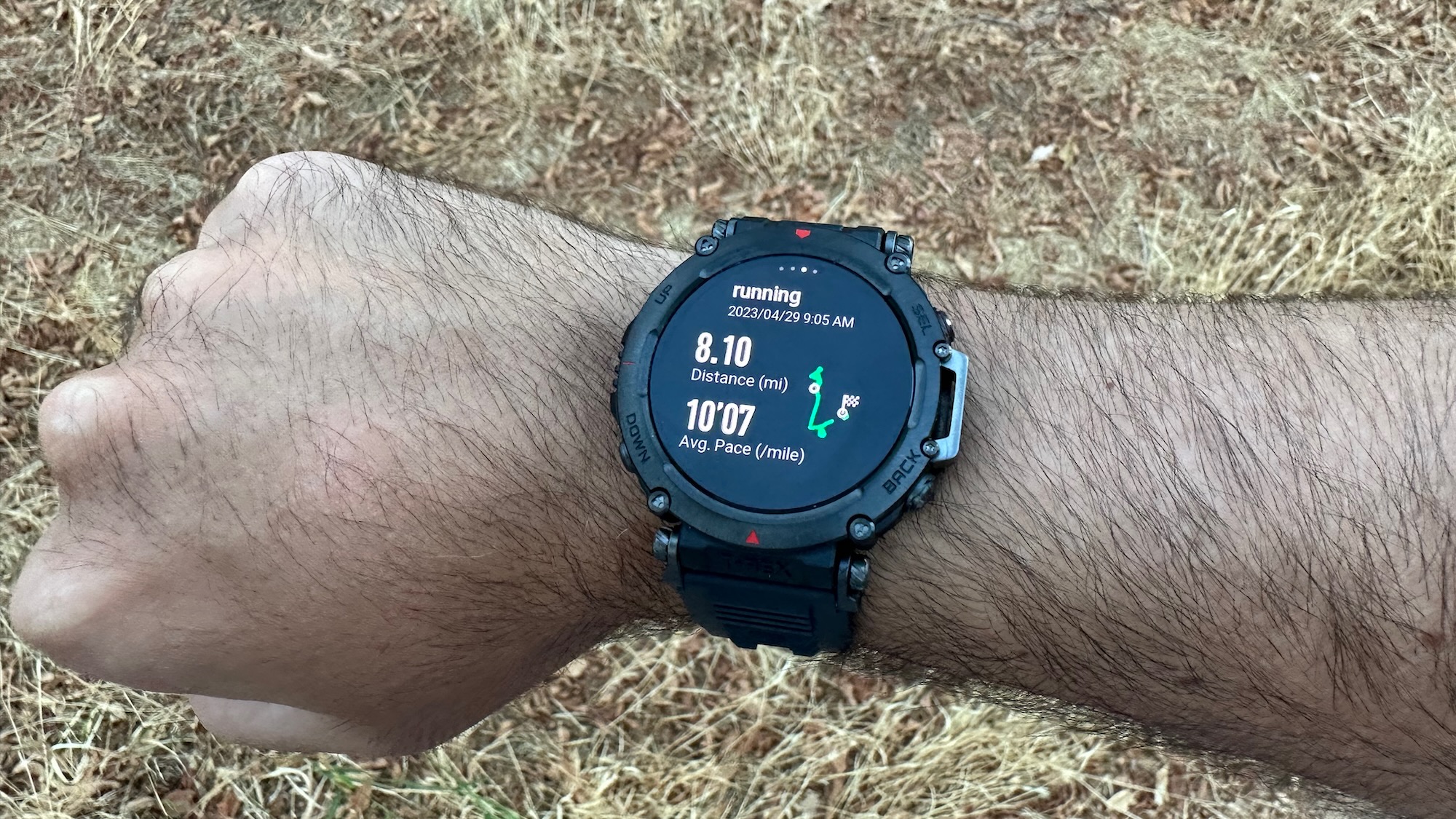
The biggest problem with the Amazfit T-Rex Ultra is simple: I just don’t want to wear it all day because of how heavy it is. During workouts, it’s just too noticeably present on my wrist, while a lighter fitness watch would fade out of my awareness pretty quickly.
If you’re used to 80g steel watches like an Apple Watch Ultra or Garmin Epix, you might not mind this. So, I’m trying not to weigh my preferences too harshly against it. What can’t be denied is that most people are used to 50g watches, and this weighs nearly twice that.
The silicone watch band is decently comfortable but a bit stiff. I find that when trying to adjust the fit or take it off, the tongue tends to get stuck and requires some decent effort to dislodge it. And if you want to replace it with another 22mm option, you’re going to need a special tool to remove it.
As a final design point, Amazfit doesn’t specify what kind of glass protection the T-Rex Ultra has, Gorilla or otherwise. So you may want to buy a screen protector for it.
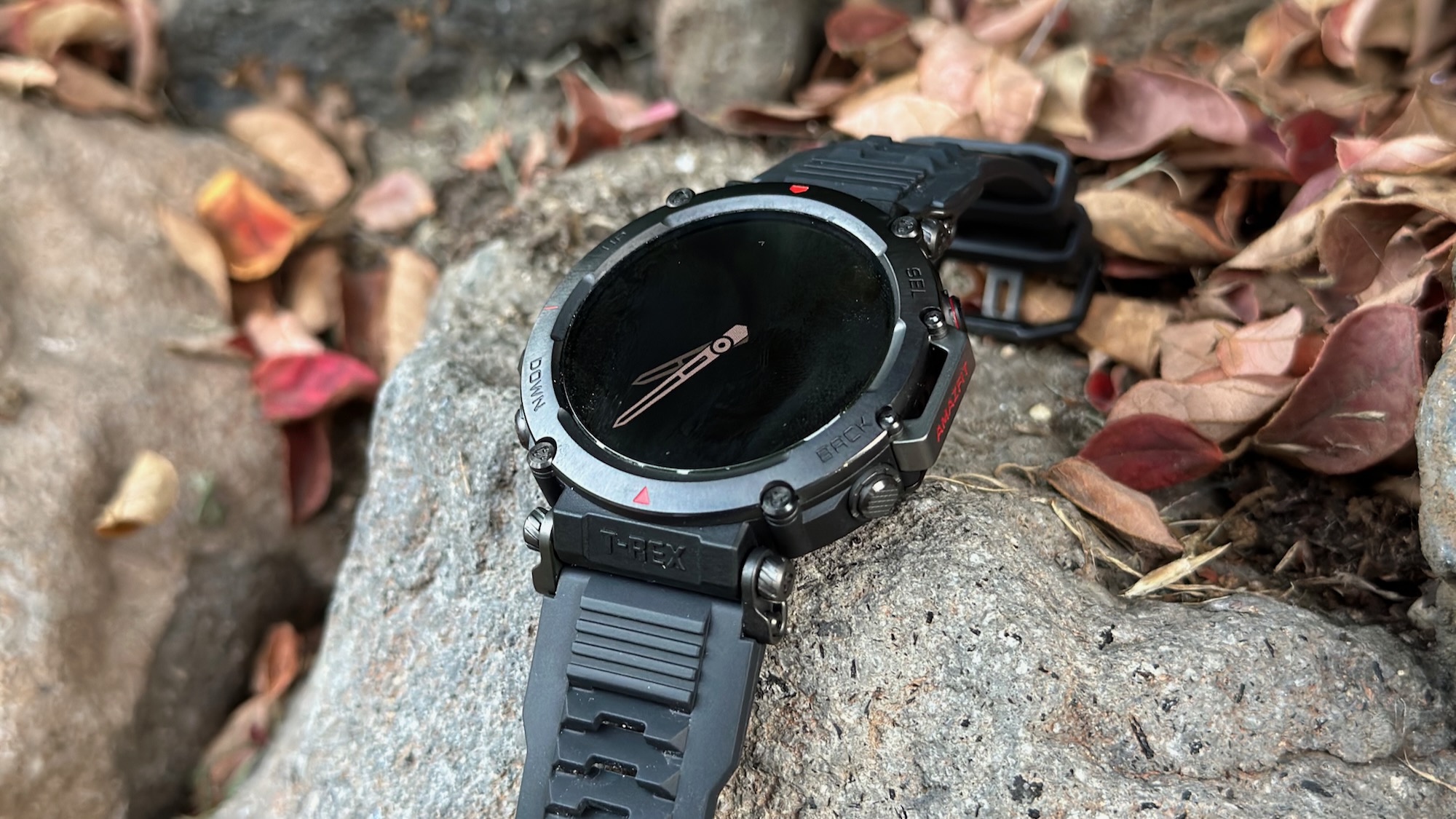
Unlike some other Amazfit watches, the T-Rex Ultra has no mic or speaker, which means no Bluetooth calling or speaking to a smart assistant like Alexa. That leaves extra room for a larger battery, so you may not mind this.
In terms of other missing features, you don’t get some of the more advanced health tracking tools like passive or active AFib detection or skin temperature. You have quick replies to some notifications, but most aren’t actionable, and there’s no method to write a custom response. And even though Amazfit has some downloadable apps, you won’t find proper third-party app support from most major developers — aside from connected fitness apps like Adidas Running and Strava.
These flaws apply to other fitness-focused brands like Garmin and COROS, to be clear. But it’s still worth noting.
Specific to the Zepp OS, it still has its localization quirks and labyrinthian settings. It’s gotten a lot better since I reviewed the GTS 2 Mini in 2021 with its poorly translated menus. But it’s still not always clear what a Settings field means until you tap on it, nor can you easily find certain settings without a lot of initial searching. On top of that, I still dislike how a lot of text isn’t visible until you wait for it to scroll onto the screen — a side-effect of Zepp OS originally being designed for compact Hanzi instead of letters, I suspect.
Competition
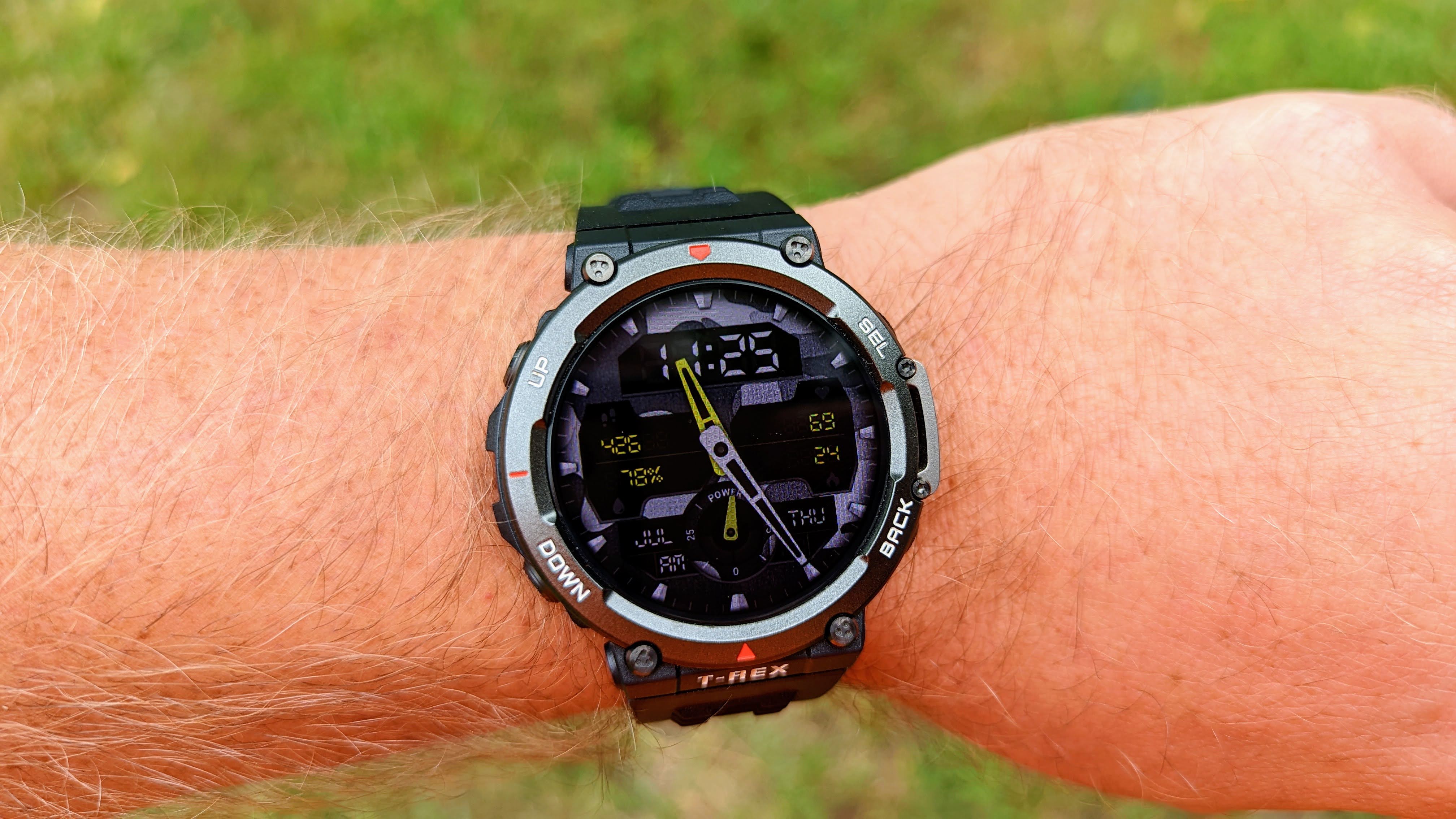
Perhaps the biggest problem with the Amazfit T-Rex Ultra is that the T-Rex 2 already does 90% of the same things for significantly less, with a more bearably dense design.
If you compare the T-Rex Ultra against last year’s T-Rex 2, the older model uses polymer instead of steel, has no adjustable lugs, and no Wi-Fi downloads. It’s not as durable for extreme temperatures or diving pressure, nor as fast to update, and it isn’t mud-proof like the Ultra.
But in every other respect — 1.4-inch AMOLED display, 1,000-nit brightness, MIL-STD-810G certifications and 10ATM water resistance, four buttons, health sensors, dual-band tracking, and Zepp Coach software — the Amazfit T-Rex 2 gives you the exact same experience.
On top of that, the T-Rex 2 has four extra days of battery life (or one extra heavy-duty day), weighs 22.5g less, and costs $170 less than the T-Rex Ultra. Our T-Rex 2 reviewer still called it “thick, heavy, and angular,” but it’s less burdensome at 66.5g while still handling most of the other rough conditions as the Ultra.
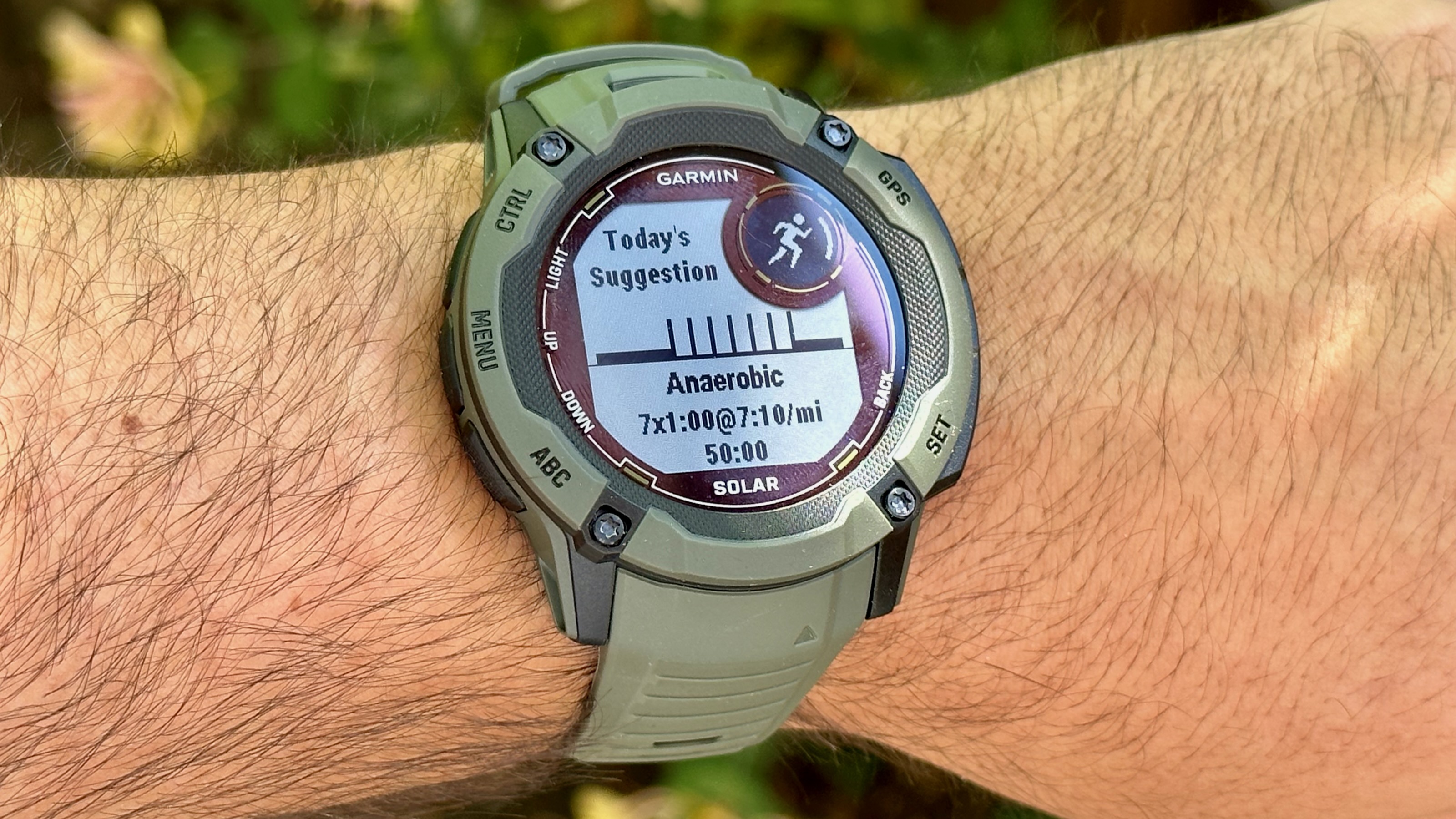
Aside from the T-Rex Ultra’s internal competition, you’ll want to check out the Galaxy Watch 6 Classic 47mm, which has the same price, a 1.5-inch AMOLED with twice the brightness, and a (less rugged) stainless steel design. Its two-day battery life doesn’t come close to Amazfit’s and lacks a Zepp Coach equivalent. On the other hand, it has significantly better performance, much better third-party fitness apps, a mic and speaker, military-grade shock protection, and Samsung Health.
If you’re more interested in rugged fitness, take a look at the Garmin Instinct 2X Solar, which costs just $50 more. Its uglier plastic appearance aside, the 2X Solar lasts 8 hours longer in multi-band mode or 99 hours longer in GPS-only mode thanks to its solar panel. You get MIL-STD-810 thermal, shock, and water resistance, a built-in LED flashlight for nighttime excursions, and Garmin’s excellent Training Readiness tool that matches or beats everything Zepp Coach has to offer.
Amazfit T-Rex Ultra: Should you buy?
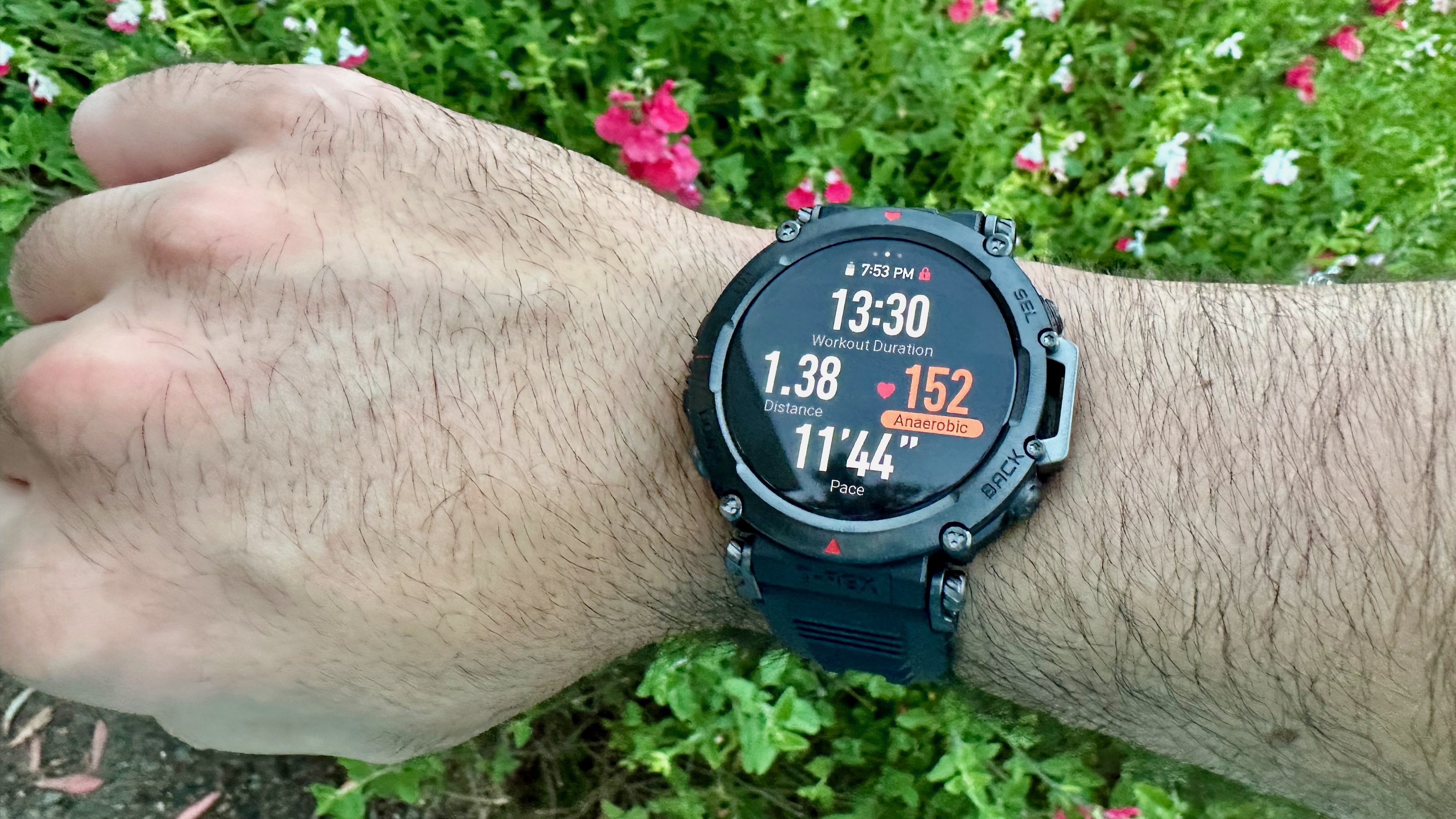
You should buy this if…
- You want one of the most rugged fitness smartwatches on the market.
- Battery life, tracking accuracy, and a large display are all important to you.
- You’re a big fan of extreme sports.
You shouldn’t buy this if…
- You want a fitness watch you can strap on and forget about.
- You can make do with the T-Rex 2’s compromises.
- You need a smart smartwatch with great app support, Bluetooth calling, and actionable notifications.
Review ratings always feel somewhat arbitrary because your criteria for a tempting wearable will be different from mine. From my perspective, the T-Rex Ultra is barely a 3-star watch simply on the grounds that I don’t want to wear it. I got the Ultra months ago and stalled on reviewing it simply because it felt like a chore to test.
But for a specific class of extreme sports athlete, world traveler, worker who spends time in rugged environments, or people with beefier arms than mine, the T-Rex Ultra has very few rivals and is seriously worth considering despite my dislike for its bulk. Just take a long, hard look at the T-Rex 2 first.
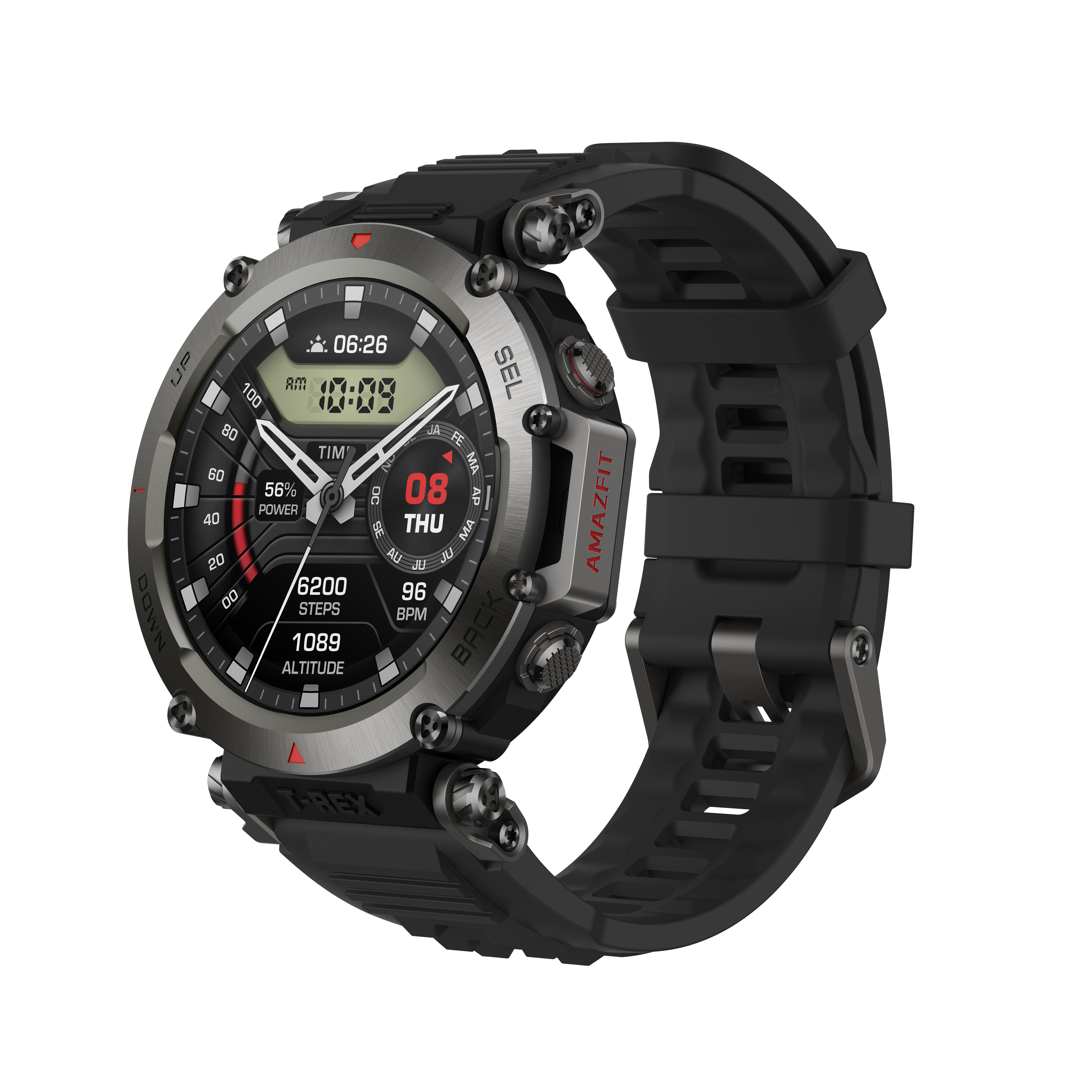
Do you need a watch for sub-zero temperatures, mountaineering excursions, or oceanic dives that’ll survive anything short of a shark attack? And are you okay trading lightweight comfort for rugged endurance and an epic battery life? Then the rugged Amazfit T-Rex Ultra is a great choice.
